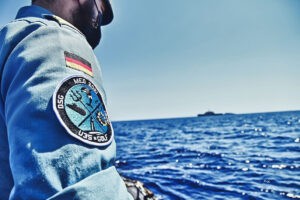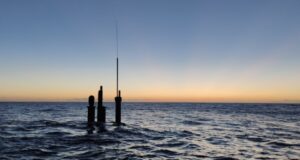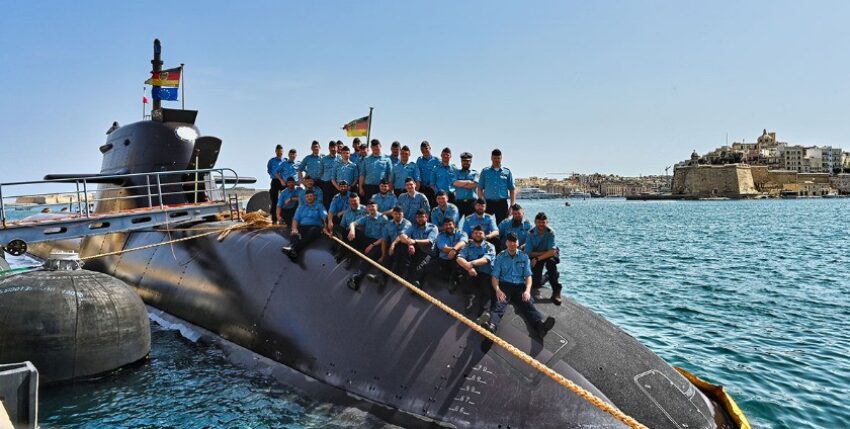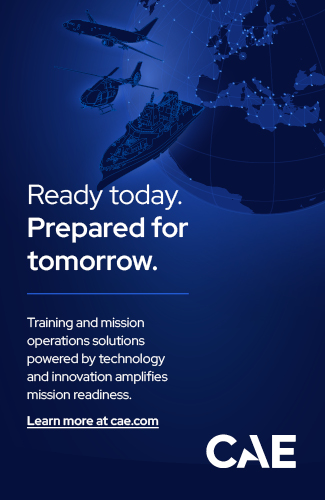State-of-the-art underwater detection also poses a threat to conventional submarines. Submariners have to face up to this.
The steel fighter glides almost silently through the pitch-black depths. In the combat centre of the Submarines Tense concentration prevails. The commander has ordered a crawl. Only the whispering of the crew occasionally drowns out the low hum of the detection and weapon deployment systems. The sonar operators hear the barely perceptible signals from distant active sonar systems. A submerged Submarine in the relatively shallow Baltic Sea is like the well-known search for a needle in a haystack. Confident, relaxed and with a quiet smile on their faces, the crew face this attempt to find it.
Suddenly, the silence is broken. A loud, high-pitched and bloodcurdlingly penetrating ping pierces through the steel hull into the interior of the boat like a bolt of lightning. Now nobody is smiling. Things get hectic in the control centre. Sleepy eyes open wide on the bunks. Submariner hate that sound. From the commanding officer to the smut, they know immediately what it means. The source of the sonar signal is not far away this time, the Submarine has been located. Furious, the commander storms into the command centre. How can this be? All the vehicles in the vicinity of the fighter were analysed as container freighters. The boat was far outside the assumed detection range of the active signals.
What nobody on board knows at this point is that the fleet service boat Alster has a new mobile sensor system with a detection range that far exceeds the expectations of the Submariner The submerged boat is detected and cleared up. Now the hunter himself is trapped.
More art than science
"The art of the cat-and-mouse game is to know who is the cat and who is the mouse." This quote by the commander of the USS Dallas from the novel "The Hunt for Red October" still holds true over thirty years later.
Many therefore refer to the Submarine hunt (Anti-Submarine Warfare, ASW) as an art rather than a science. Most operators are confronted with this image early on in their training. It describes the many challenges of underwater situational awareness under complex environmental conditions. The infinite expanse of the oceans, supposedly short sensor and weapon ranges on one's own side and seemingly limitless sensor and weapon ranges on the other. Submarines this statement to many Submarine hunters are only too happy to pass their lips. ASW remains one of the most challenging warfare areas in naval warfare.

However, the 1st Submarine Squadron has been able to make decisive progress in this field since the first steps of further development as part of the West Atlantic deployment and the consistent evaluation of all manoeuvres, firing sections and school trips together with developments from the Wehrtechnische Dienststelle 71 (WTD 71) and the soldiers of the Naval Aviation Command. This is demonstrated by the experimentally applied, newly developed procedures using state-of-the-art sensor technology in the Sensor Reconnaissance Organisation (SAV). For the first time, the 1st Submarine Wing successfully deployed the SAV together with other stakeholders such as the Cyber and Information Space Command, WTD 71, the German Air Force and naval agencies as part of the Frontier Conceiver 2020 and 2021 reconnaissance operations, resulting in ground-breaking findings. The findings were by no means limited to aspects of reconnaissance. They demonstrated the potential of the German Navy in the area of theatre ASW. The toolbox of instruments with which challenges in ASW can be met has become significantly more extensive and potent. Used in combination, they demonstrably achieve results that clearly exceed the previously known standards.
One crucial fact makes all this all the more remarkable. There is no need for expensive scaffolding for new fixed platform sensors. Low-frequency towed sonar systems are not a mandatory prerequisite for the use of state-of-the-art underwater detection, such as bi- and multistatic methods. There is no need to wait for new, powerful weapon platforms specially designed for ASW. The capabilities and procedures outlined are tried and tested. They work and are available on the market. Almost any naval unit can be utilised as a high-performance capability carrier for underwater situation awareness relatively quickly and at low cost. This makes the navy Submarines unpredictable. Each above-water unit can carry mobile sensors that provide a Submarine crew will make us sleep more uneasily. A former commander of the 1st submarine squadron deliberately exaggerated: "We can go submarine hunting with the Gorch Fock."
Scenarios like the one described are no longer fiction but reality. The submarine weapon system is facing a growing threat from highly potent underwater sensors. Vehicles that use the Submarine The risks that could previously be neglected with a clear conscience suddenly pose a real and non-negligible threat. This restricts the room for manoeuvre of Submarines immensely.
Not only will your opponent become more powerful, he will also be more difficult to recognise and therefore more unpredictable. For commanders of conventionally powered SubmarinesThis poses a serious tactical problem for the fighters who, due to the limited speed of their weapon system, have to act primarily by anticipating the enemy's behaviour.
Part of conventional deterrence
Localisation of the conventional Submarine is like looking for a needle in a haystack - this decades-old certainty is no longer valid. The Submariner place.

The digitalisation of the ocean is no longer a buzzword for the military. It must be seen as a challenge and an incentive to maintain the combat value of a manned Submarines in the operating area at sea. Above all, this means that a modern submarine can only be located using active sonar signals. Rather, a Submarine be able to obtain a digitalised situational picture of the deployment of enemy units from its own forces. This was successfully demonstrated as part of the SAV and the Submarine successfully integrated into a dynamic and highly agile task force.
Understanding the new role Submarinefar removed from the lone underwater fighter, allows integration into holistic networks that do not end at the water's surface with the transmission of a crypted teletype according to predefined time windows. The integration and near-real-time networking of a Submarines The integration of this tool into the command and control structures of military leaders makes it possible to access it without delay. In a dynamic operational command, the military leader or political decision-maker is thus able to achieve a targeted effect at any time by means of a Submarine to instruct. These are possible uses of a submarine, that we did not know in the 20th century in this quality and concentration. To this day, they are not included in any of our textbooks for military leaders.
The added value of digitising the ocean and the recognition of scientific progress and consistent testing in hydrographically challenging waters are all key elements that show us that ASW falls short as a heading in the new, complex, digital world. The transition between the underwater electromagnetic and acoustic spectrum is becoming increasingly fluid. We must continue to think outside the box.
Dedicated submarines and in particular their tactical leaders on the ground are already benefiting extensively from this network and the willingness to help shape it. New communication channels and situation picture exchange systems enable deeper integration of the submerged submarine into three-dimensional formations. The formation commander has direct and almost instantaneous access to subordinate submarines. They can be coordinated more closely and thus be deployed in a more targeted manner. This significantly increases the effectiveness of underwater warfare. If necessary, the existing information advantage can be converted directly into a reservation of effectiveness.

The task now is to quickly disseminate knowledge about the type of deployment and functionality of these sensors and communication channels within the navy. Technology and derived procedures must be quickly incorporated into training and applied in exercises and manoeuvres. In close cooperation with the flotillas and squadrons, they must be further developed in a targeted manner and established as procedures in tactical instructions. To achieve this, however, the mindset must first change across the board. We do not have to wait for the Towed Array Sonar of the Frigate 126 to become ASW-capable. We can already make very important contributions to ASW in the Alliance today with the systems available to us and new, successfully tested procedures. The imminent introduction of the F 126, the P-8A Poseidon and the Sea Tiger will complete this process and put us at the forefront of ASW-capable nations. They will significantly enhance our capabilities, particularly in terms of endurance and endurance.
While the startled Submarine crew sweating and trying to escape the threat, a few nautical miles away on U 32 there is tense concentration. The target data of the fleet service boat Alster was first transmitted to the leader of the convoy on the tender Main and then from there to the deeply submerged submarine. They matched the own situation picture on U 32. With the aid of the external sensors, the vessel's own Submarine generate a valid target solution. U 32 waits for the order to engage the enemy Submarine. It can obtain this at any time thanks to the successfully tested new communication procedures. For the first time, the German Navy has a reservation of effectiveness in its hands.
Frédéric Strauch is Commander 1st Submarine SquadronRoland Spahr is the former head of the Navy's Hydroacoustic Analysis Centre, Tobias Eikermann is commander of the U 212A Foxtrot crew.
Frédéric Strauch, Roland Spahr, Tobias Eikerman










